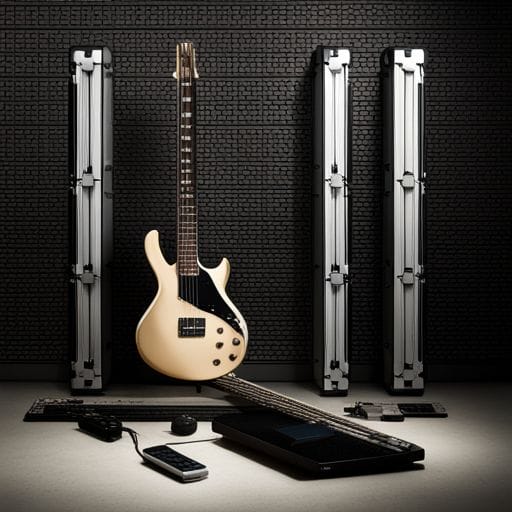Mixing the Low End: Get Big, Bold Bass Sounds

What techniques are essential for achieving a big, bold bass sound during the mixing process?
Nothing gives your music a solid foundation like a powerful, well-mixed bass. Bass frequencies add depth and substance to any track, making it more engaging for the listener. Many producers struggle, however, to get that “perfect” bass sound – the one that is big, bold, and impactful without overpowering the rest of the mix. In this article, we will explore techniques and strategies to help you mix the low end effectively and get that massive bass sound you’re after.
The Importance Of Bass Frequencies
In any piece of music, the bass provides the rhythmic and harmonic foundation. It’s the element that provides the backbone of the mix, and it can either make or break your track. However, dealing with bass frequencies can be quite a complex task. Too many low frequencies can muddy the sound, while too few will leave your track lacking in power and depth.
Understanding The Low End
The low end usually includes all the frequencies below 200 Hz, containing both the sub-bass and bass. The sub-bass, ranging from 20 Hz to 60 Hz, leads to the physical sensation of sound, its vibration felt instead of heard. The bass, between 60 Hz to 200 Hz, is where the main notes of the rhythm section reside.
Starting With The Right Sound
To have a great bass in your mix, you must start with a fantastic bass sound. And this is not just about the bassline but also the quality of the sound. Is your bass sound well-recorded? Is it free of any unwanted noise? These are some of the questions you should ask.
Mixing Techniques For The Low End
High-Pass Filtering
One of the most effective techniques for managing the low end is high-pass filtering. This involves removing unnecessary low frequencies from the tracks that don’t contribute to the depth of the song. It helps in reducing the muddiness of the track.
Use of Equalization
Equalization (EQ) gives you the ability to boost or cut frequencies in your mix. For instance, if your bass is lacking in power, you could use an EQ to boost the fundamental frequency of your bass sound. It’s crucial, however, to use EQ wisely. Overuse of EQ can lead to a track that sounds unnatural or over-processed.
Sidechain Compression
Sidechain compression is another technique which, when done properly, can help you achieve a cleaner mix. It’s all about carving out a little space for your bass sounds in the mix by reducing the volume of other elements when the bass is playing.
By acquiring an understanding of the low end and employing these tips, you can take your mix to the next level. But remember, like all skills, it will take time and practice. So keep pushing the boundaries and soon, you’ll be producing big, bold bass sounds with ease.
